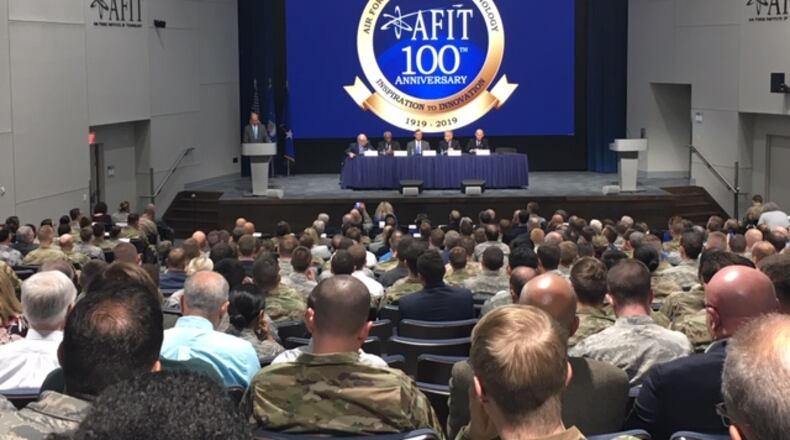“My No. 1 priority here is to make sure that everything we do in terms of what we teach, what we research, is supporting where the Air Force and the Department of Defense are going in the future,” said Todd Stewart, a retired Air Force major general who became the first civilian director and chancellor of AFIT in 2012.
The Air School of Application was established on Nov. 10, 1919, at what was McCook Field in Dayton, Wright-Patterson’s predecessor.
MORE: Springfield Air Guard unit in consideration for Space Force inclusion
When the Air Force became an independent military branch in 1947, the institute became AFIT and formally shouldered the mission of conducting “educational courses primarily in the field of engineering sciences and industrial administration.”
Since the events of Sept. 11, 2001, combating global terrorism has been one of its primary concerns. But in recent years, that focus on shifted, with national military leaders and war-planners recognizing growing competition from nations such as Russia and China.
As recently as six years ago, AFIT’s future was an open question in an era of of sequestration-driven budget cuts. But with more than 500 military and civilian educators and some 3,000 post-graduate students, AFIT’s role is critical, Stewart and other school advocates say.
“When you’re looking at potential adversaries and competitors, like China, they are making national-level investments in strategically significant technologies — hypersonics, quantum science, quantum computing … that’s a real concern for what we’re doing,” Stewart said.
MORE: Auto dealer Jay Schmitt gave his father the gift of life for two extra years: "I have no regrets"
Nuclear deterrence and general recapitalization of deterrence capabilities, treaty participation, among other subjects, are all critical today, as well.
“And of course, the major debate these days is space,” Stewart said.
The day can be envisioned when space will be seen not only as a “war-fighting-enabling domain” — as a stage for satellites — but as a place where battles are actually fought.
Congress is debating the creation of a sixth military service branch, a U.S. Space Force. And the National Guard Bureau has asked the Ohio Air National Guard’s 178th Wing in Springfield — a short drive from Wright-Patterson — whether it would welcome a role in that arena.
“We are absolutely on the front line, not only in developing technologies, but in terms of thought leadership,” Stewart said.
A highlight of Thursday’s events was a panel discussion with five former astronauts with strong AFIT ties.
Former NASA astronaut and retired Air Force colonel Guy Bluford, who studied at AFIT in the early 1970s, earning an PhD, said as a youth growing up in inner-city Philadelphia, what he wanted was to be an aerospace engineer.
“AFIT made that happen,” Bluford said.
Former astronaut — and Apollo 11 moon-walker — Edwin “Buzz” Aldrin Jr. has strong family ties to AFIT. Edwin Eugene “Gene” Aldrin Sr. was assistant commandant of what was the Army’s first test pilot school at McCook Field, and he founded the engineering school that was AFIT’s predecessor institution.
Aldrin, now 89, also attended the Massachusetts Institute of Technology, thanks to an AFIT-sponsored program. He is considered an AFIT alumni.
After MIT, Aldrin was unsure about his next assignment, he told an AFIT audience.
“President Kennedy committed to go to the moon,” he remembered. “A year and a half later, at Rice University, in ‘62, he said, ‘We choose to do these things not because they are easy, but because they are hard.’ And they were hard.”
”
About the Author

